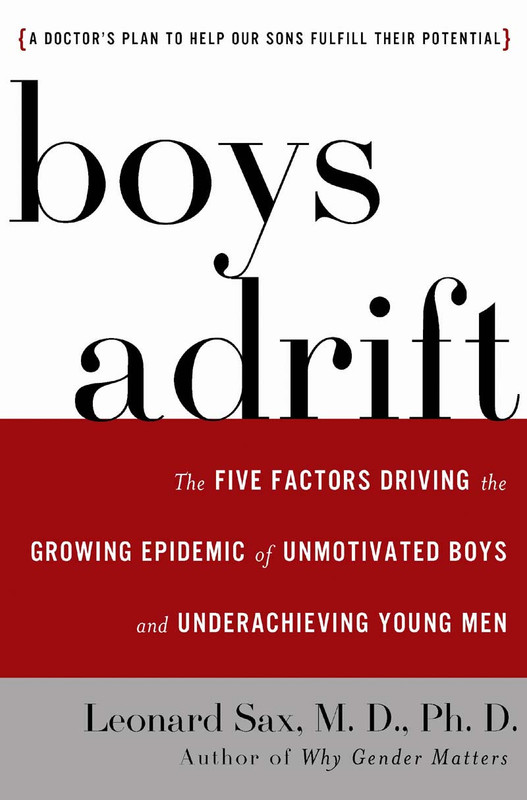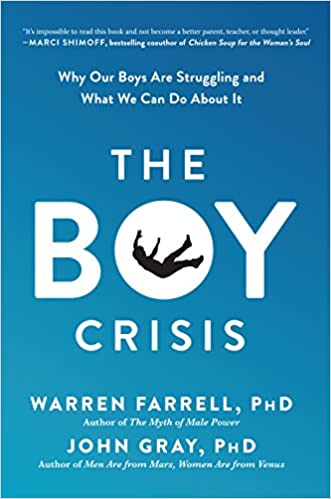
School is becoming an increasingly difficult place for today's boys. Here are some of the potential reasons why, and steps parents can take to help.
portlandoregontherapy.com
Boys in this country are struggling in school. By many measures, boys and young men are being vastly outperformed by their female counterparts. As of 2014, about 60 percent of college graduates were women, whereas in 1970, about 60 percent of college grads were men. College women also tend to earn higher grades, and drop out less frequently than men. Some of this may have to do with a more gender equal world, in which women are more encouraged to pursue a college degree and professional career than they were in the 1960s and 1970s. This should be celebrated. That said, it’s clear that compared to girls, boys are struggling mightily in the classroom.
Consider the following statistics: Two thirds of Ds and Fs assigned in schools go to boys. Boys are 33 percent more likely to drop out of high school than girls. The average 11th grade boy writes at the level of the average 8th grade girl (Thompson). While affluence has a huge impact on academic outcomes, controlling for variables like race, neighborhood, and socioeconomic status shows a gender gap is clearly visible in every community (Sax). In other words, take any boy and girl of the same race, from the same neighborhood, and of roughly equal socioeconomic status, and the girl is likely to outperform that boy in elementary school, middle school, high school, and college.
Understanding all of the factors contributing to boys’ struggles in school is a big mission, and one that’s too ambitious for a single blog post. Instead, this post will address a specific question. Why does it seem that so many boys hate school, and are unmotivated to succeed academically?
1) Understanding this issue begins with an understanding of how the brain develops. Boys and girls brains develop differently. Brain research shows that in some regions of the brain, girls’ brains develop at a pace about two years ahead of boys’ brains. Notably, in early childhood, girls typically experience important developmental sequences in the parietal grey matter about two years ahead of boys. This is the region of the brain connected with spatial orientation, speech and language development, and attention. Consequently, girls ages 5-7 are likely to be better than similarly-aged boys at reading and writing, sitting still, and maintaining focus.
With this in mind, let’s consider some changes kindergarten curriculums have undergone in the last 30-40 years. Kindergarten used to be a space for kids to play. Creative play was encouraged, and by and large book learning was reserved for first grade. In the name of “the earlier, the better,” today’s kindergarten involves a formal reading and writing curriculum, where 5-6-year olds are expected to sit still at desks and learn. Many 5-6 year old girls are developmentally prepared for these tasks. Most boys are not. This is not because our boys are stupid, or have ADHD – they simply aren’t developmentally prepared to handle reading/writing, sitting still, and focusing for extended periods of time.
What happens to those boys? They’re placed in a group for the kids who can’t read and write and can’t sit still. After all, the teacher has a job to do, and that teacher’s job isn’t achievable if the kids can’t follow the rules. Unfortunately, this has major ramifications for the boys placed in the “slow” group. Research shows that most 5-year olds “are keenly aware of their status in the eyes of grownups” (Sax). In other words, kids understand when they’re being placed in the “slow group,” and as early as kindergarten begin to internalize negative messages about school. And once a young boy has “decided that the teacher doesn’t like him…he’s likely to generalize that belief to other teachers and other classrooms” (Sax). This means that a kindergartner who believes he’s bad at school and the teacher hates him, is likely to hold those same beliefs in elementary school, middle school, and high school.
2) Today’s American education, more so than ever before, emphasizes book learning over real-life experience. It’s widely accepted amongst developmental psychologists that school curriculums need to emphasize both book learning, and real-world experience. There is detailed research demonstrating that when a child’s early educational experiences consist too heavily of book/screen-based learning at the expense of getting outside, children are at increased risk for ADHD (Louv).
Additionally, many boys are motivated by real-world understanding. Field trips can spark a boy’s interest in so many ways. Seeing an animal, tree, or rock in nature is likely to make classroom learning about the same animal/tree/rock feel exciting and relevant. If boys don’t get to see and feel what they’re learning about, it’s often meaningless to them. This is can also be true for girls, however research shows that girls are more likely than boys to do homework because a teacher said they had to, or because it’s important to get good grades. Boys, on the other hand, are more likely to do the homework “only if it interests them,” (Sax). Consequently, boys are disadvantaged in today’s public-school curriculum that has moved increasingly toward screens, standardized testing, and learning methods with measurable outcomes. Field trips, time in nature, and playtime are being systematically weeded out of today’s curriculums, and boys are paying the price. And, boys who are behind in their schoolwork are often made to stay inside during outdoor/recess time in order to make up their work, which only perpetuates this cycle.
Of course, the issue is more complex than I’ve outlined in this post, but I strongly believe these are some of the key dynamics that factor into boys not liking school.
If you’re a parent, and this fits the bill for your son (or your son hasn’t yet started school), consider taking some/all of the following steps:
Consider having your son start kindergarten at age 6, instead of age 5. At age 6, his brain is more likely to be ready for tasks like reading/writing, sitting still, and maintaining focus. As evidenced, struggling with these tasks in kindergarten can have long term ramifications. Alternatively, find a kindergarten that emphasizes play, and getting outside.
Join your local parent-teacher association and encourage your son’s school to increase opportunities for out-of-the-classroom learning experiences.
Get your boy outside: sign him up for camps, programs, or teams that involve outdoor play.
Does your boy thrive on competition? If so, school may be a tough place for him to satisfy his competitive outlet. School-based sports-teams aren’t enough. With the emphasis on specializing in a sport early and playing that sport year-round, making a team isn’t as easy as it used to be. Make sure you’re supporting your son’s competitive outlet so that video games aren’t his only choice for competition. If he gets cut from his high school sports team, find a recreational team he can play on.
Limit your sons exposure to screen-time. This is one of the hardest things for a parent to achieve, but it’s critically important. Understand the games your son is playing, and make sure you know what games he has access to at friends’ homes. While there is conflicting research, there’s a growing body of evidence that first-person shooter games, and games that emphasize violence, place boys at increased risk of disengagement from the real world, less caring/more hostile attitudes, and an increase in antisocial behaviors. These games also reward distractibility and multitasking, skills that don’t translate well to the classroom or real world. Make sure your son has ample opportunities for engaging in real-world activities that are exciting to him, so that video games aren’t the only draw!
References:
Find parenting tips and advice on PBS KIDS for Parents! Explore articles written by parents and experts to help raise kids who thrive at every age.

www.pbs.org
Boys Adrift, Leonard Sax:
https://www.amazon.com/Boys-Adrift-Epidemic-Unmotivated-Underachieving/dp/0465072100
Last Child in the Woods, Richard Louv:
https://www.amazon.com/Last-Child-Woods-Children-Nature-Deficit/dp/156512605X/






















